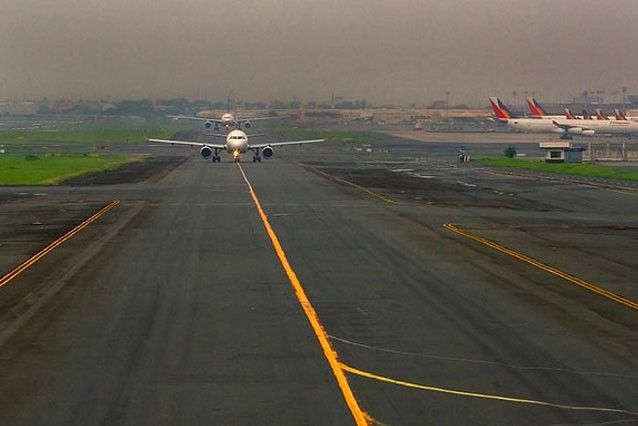All runways lead airlines to recovery

MANILA, Philippines — On a humid Wednesday afternoon in Singapore, an Airbus A321neo moved about the runway of Changi Airport with trembling in its wheels but calmness in its wings.
If only the aircraft could speak, it would describe the gravity of the history it is about to make: as the first commercial flight of a Philippine carrier to run on used cooking oil and farm and forestry waste.
With the horror of the pandemic in mind, the aviation industry – one of the largest polluters of the world – looks to the future with caution, vowing to trim its carbon emission to mitigate its damage to the planet.
Inside the A321neo, passengers aware of the change in the jet fuel used were puzzled why the aircraft was taxiing to the runway at a slow pace. Perhaps the runway was congested; maybe it’s just the way it was; maybe an airport issue?
There were concerns on whether used oil and animal waste could give a narrow-bodied plane enough power to fly nearly 1,500 miles to Manila. The flight allayed the concerns.
On Sept. 28, 2022, budget carrier Cebu Pacific flew the first commercial trip, Flight 5J 814, on sustainable aviation fuel (SAF), emitting 42 percent less carbon than regular flights.
This development, among others, proves that the aviation industry that was once grounded by a virus invisible to the human eye is regaining cover one flight at a time.
Once grappling for mere survival, Cebu Pacific and flag carrier Philippine Airlines (PAL) started looking beyond the pandemic by investing in decarbonization measures to mitigate their impact on what science says is the next big crisis: climate change.
Cebu Pacific plans to transition to an all-neo line by 2028 to lessen its fuel consumption and, in turn, cut its carbon footprint. In its roadmap, Airbus neos should account for 43 percent of Cebu Pacific’s fleet in 2022; 56 percent in 2023; 69 percent in 2024; 81 percent in 2025; 91 percent in 2026; 97 percent in 2027, and 100 percent in 2028.
For 2023, the Gokongwei-led airline eyes to spend nearly $2 billion for the delivery of 11 Airbus aircraft: three A320neo, four A321neo and four A330neo. In the long term, Cebu Pacific intends to purchase 25,000 tons of SAF from Shell Aviation between 2026 and 2031.
PAL, for its part, hired the services of award-winning scientist Glenn Banaguas to outline the flag carrier’s path toward decarbonization, setting out to become a net-zero airline by 2050 in line with international targets.
Banaguas – who won in May the UN Sasakawa Award for Disaster Risk Reduction – will assess the greenhouse gas emissions of PAL and submit recommendations on how it can decarbonize.
As concerned as the airlines may be about the future, they know that challenges await them in the immediate, as China remains shut to leisure travel and the peso depreciates against the US dollar.
AirAsia Philippines spokesman Carlo Carongoy said the low-cost carrier had wanted to resume its flights to Guangzhou, Shanghai and Shenzhen last year. However, they had to call it off due to uncertainties as to when Beijing will reopen its borders to foreign travelers.
“We were supposed to open to a few destinations in China last year, but protocols there tend to change from time to time. Prior to the pandemic, we were flying to Guangzhou, Shanghai and Shenzhen,” Carongoy told The STAR.
Further, Cebu Pacific spokesman Carmina Romero said the airline is hurting from the impact of a depreciating peso, as up to 70 percent of its expenses are denominated in dollars.
In its financial statement, Cebu Pacific operator Cebu Air Inc. declared that its forex losses have more than doubled to P3.86 billion as of end-September, proving how risky the peso’s decline is for airline operations.
Cebu Air said the peso was trading 58.63 to $1 at the close of September when it was only hitting the 51 level at the start of 2022.
To overcome these challenges, domestic airlines came up with their own playbooks that look the same on a few chapters and appear different on many pages. From expanding their verticals to maximizing their fleet, PAL, Cebu Pacific and AirAsia Philippines trust that their strategies would lead to their full recovery.
PAL spokesman Cielo Villaluna told The STAR that airline owned by taipan Lucio Tan would expand its cargo segment to cement its position as the only domestic carrier with a full service network. In particular, PAL hopes to bag contracts to airlift health needs, especially COVID-19 vaccines, with the pandemic ongoing.
“We will sustain and build up our cargo business to tap more air freight market opportunities and keep supply chains moving to meet specific transport needs [to reinforce that] PAL is not only a passenger airline, we are a cargo carrier, too,” Villaluna said.
PAL saw a 21 percent rise in its cargo income to P10.74 billion in the nine months to September, as the recovery in air traffic also paved the way for trade to pick up.
For Cebu Pacific, Romero said the tactic is to increase aircraft utilization, cut the price per seat, and reduce air fare for passengers to trim its fixed costs and minimize forex losses.
“As we increase flights, this brings cost per seat lower as we spread fixed costs—both peso and dollar-denominated costs—across seats. Every time we fly, our costs are also spread, ensuring affordable air fares for passengers,” Romero said.
PAL and Cebu Air, both listed in the Philippine stock market, believe that things are about to look up in the near future. And their recovery not only benefits the pockets of their investors, it also means that new routes will be introduced, tourism dependents will gain, additional workers will be hired.
In 2021 PAL sought Chapter 11 bankruptcy settlement in a New York court to clear more than $2 billion in outstanding debt, as well as slash its fleet capacity by 20 percent to 70 aircraft.
PAL exited Chapter 11 proceedings before 2021 ended after getting $505 million in debt support and long-term equity from majority shareholders.
Afterward, PAL proceeded to resolve its longstanding issue on retirement benefits demanded by the Flight Attendants and Stewards Association of the Philippines that resulted in the signing of a collective bargaining agreement raising the pay and incentives of cabin crew members.
Candice Iyog, vice president for marketing and customer experience at Cebu Pacific, also said that the budget carrier is trying to rehire its flight attendants and stewards that it had to let go at the height of the pandemic. She added that the airline would require additional workers once all of its pre-pandemic routes like China reopen.
“We have been continuously hiring cabin crew in preparation for our network’s ramp-up. It really depends on the network that we would end up with, but if we are able to bring back international routes, it changes everything because we will need more crew,” Iyog said in an interview in July.
Apart from this, infrastructure developers both from the public and private sectors are investing in aviation facilities, with a focus in the regions, to boost travel and trade activities.
The Marcos administration, in its first full year in office in 2023, will spend a total of P2.49 billion to upgrade five airports, namely, Antique Airport, Bukidnon Airport, Daniel Z. Romualdez Airport in Tacloban, Laoag International Airport and Ninoy Aquino International Airport.
In September, the consortium building the $11 billion Sangley Point International Airport bagged the notice of award to proceed with the construction of the gateway that can serve as many as 75 million passengers a year.
Similarly, the New Manila International Airport, set to be largest gateway in the Philippines, has reached 42 percent completion on land development as of November. Ramon Ang’s San Miguel Aerocity Inc., the concessionaire tasked to build the airport, plans to operate it by 2027.
PAL president and chief operating officer Stanley Ng believes that putting up new airports boost tourism activities and create job opportunities in areas where they are located. For aviation, this means that airlines are provided with fresh locations that they can fly to.
As it stands, all runways lead the airlines to recovery, it is just up to them to take off.
- Latest
- Trending































